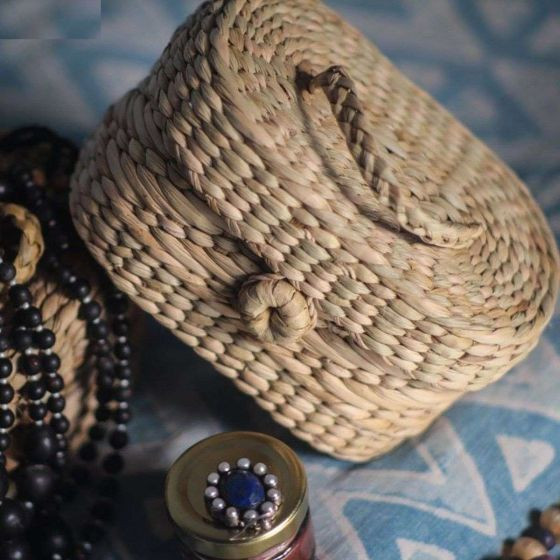India abounds in natural fibres and on this independence day, let us celebrate our resources and our skilled artisans and craftsmen who make art out of them.
- Jute: One of the most affordable natural fibres, Jute symbolises antiquity and cultural heritage. Bangladesh, Pakistan, are China are some of the producers of Jute, with India being the largest producer and exporter. The fibre is woven to produce a large number of necessary items as well as luxury home décor products which are high in demand. Gunny bags, chair coverings, carpets, hessian cloth, handbags, and ropes are a few examples of such products.
- Bamboo Fibre: Being one of the fastest-growing plants in the world, bamboo fibre products form exceptional modern textiles. For prompt growth, bamboo does not require any chemicals, and hence, is often termed as an environmental wonder.
The versatile property of this fibre makes it an essential raw material in the textile industry. Various kinds of attires, bathrobes, and towels are fabricated out of it. Bamboo’s antibacterial nature makes it highly suitable for making masks, bandages, nurse wears, and sanitary napkins.
For centuries, Asia has utilised fibre in a diverse range of uses that include cooking essentials, construction and transport necessities, medicinal purposes, and textiles. - Banana Fibre: The fibre is extracted from the pseudo-stem of banana plants. The stems are cut into strips and then washed. They are often dyed with bright colours to lend an attractive appearance. The artisans employ traditional procedures to produce a range of utility items such as sacks, hessian, ropes, canvas and screens, tool bags, luggage covers, and so on. Banana fibres when blended with cotton and wool, blankets, carpets, and rags can be produced.
- Palm Leaf: Skilled artisans of Southern Andhra Pradesh and Tamil Nadu are specialised in the craft of making attractive items of palm leaves. After collection, these leaves are dried under the sunlight for 2 to 3 days.
The craftsmen employ splitting tools to further split the large leaves into 3 or 4 smaller-sized leaves. Then, based on the designs of the items, the leaves are dyed. Finally, they are sun-dried and the desired products are crafted out of them. Baskets, trays, boxes, stationery items, and assorted items like purses, laundry bins, coaster, toy boxes, and so on are generally made out of them. - Kashmir Willow: As the name suggests, these fibres are extracted from the wood of willow trees found in various regions of Jammu and Kashmir both in India and Pakistan. Willow is used to manufacturing premium quality cricket bats. Kashmir willow bats are handmade by skillful craftsmen. These bats are used in national and international cricket matches by professional players, thanks to their durability and shock-resistant properties. Being light in weight helps in proffering easy grip and effortless handling.
- Coir: Containing the highest concentrations of lignin among most vegetable fibres, coir is endowed with superior strength. Coir products are, however, unsuitable for dyeing due to being less flexible. Extracted from the outer shell of a coconut, these fibres are imbued with good resistance against damage from saltwater. Ropes, brushes, mattresses, and automobile seats are a few of the products made out of coir fibres.
- Cotton: Undoubtedly, cotton is known to be the most popular natural fibre all across the world, thanks to its extreme softness and breathability. This fibre is a good absorbent and soaks in moisture readily. Due to this, cotton is ideal for hot and humid weather. High tensile strength makes the fibre washable. Cotton is widely used in the global textile industry.
- Sisal: Sisal is a strong and stretchable fibre, mostly used in the production of composite materials, that are used in the making of furniture and automobiles. It is lustrous but its coarse and hard texture makes it unsuitable for textiles or fabrics.
Sisal resists saltwater deterioration and its fine surface texture makes it suitable for a wide range of dyes. - Silk: Produced by cultivating silkworms, silk plays a significant role in the textile industries of the world. The silk threads are endowed with great tensile strength and absorbency. The triangular structure of silk fibres acts as a prism and refracts light, rendering the silk clothes a natural shimmer.
- Wool: Wool is extracted by the shearing of wool-bearing animals. The fibre’s natural scale patterns make it easy to spin. Being bulkier than other textiles, wool provide superior insulation and serves the purpose of ideal winter clothing. Australia is the largest producer of wool. In India, Rajasthan, Himachal Pradesh, Jammu and Kashmir are some of the wool-producing states. Superior elasticity, resilience, and durability make wool one of the finest fibres.
Picture Source: artsofindia.in



